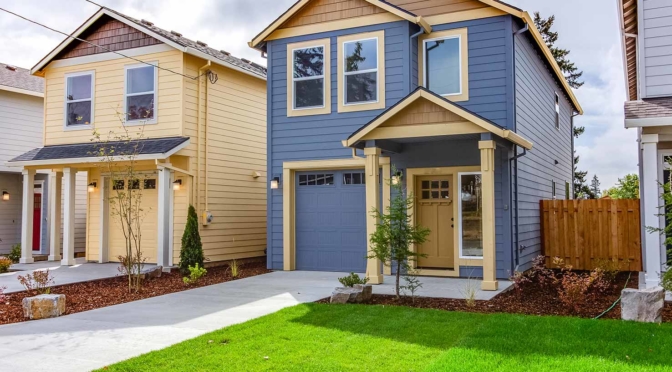Help homeowners beat color decision paralysis and start jobs faster
First impressions are important, and for homeowners, their guests’ first impression of their home will be its exterior. It’s no wonder so many homeowners want to freshen up their exterior with a fresh coat of paint—and why many of your potential customers want your opinion on their color selection.
Though you may not feel like the right person to ask about this, successfully helping a homeowner decide on a color can help you to close more leads, get jobs scheduled and started on-time, and position yourself as a color hero to your clients. Sue Wadden, Director of Color Marketing at Sherwin-Williams, offers strategies you can use to help your clients select the perfect exterior look.
Start with the house itself
The customer’s neighborhood can provide a good starting point for color conversations.
“Use the neighborhood as a guide,” Wadden says. “After all, exterior painting is expensive. The homeowner wants to make sure their home looks amazing, but they also want to blend in with the neighborhood. For example, if they’re bordered by a beige house and a yellow house, pick a color like green that will harmonize with those colors.”
You can also consider harmonizing the house’s interior and exterior colors with one another. For example, if a home’s exterior color is a neutral, neighborhood-appropriate shade, but the interior is full of vibrant blues and greens, consider painting the front door a matching blue or green. It offers a splash of personality and welcomes visitors with a sneak peek of what they’ll find inside.
Take inspiration from trends
A little research can go a long way when it comes to color conversations with potential clients. The next time you’re on social media, browse some paint or color pages for inspiration and points of reference. Save or screenshot color schemes that catch your eye.
Pinterest can be a great platform for this, says Wadden: “You don’t just want to be a Pinterest commercial, but Pinterest can be a great place to look around and get a basic idea of what kinds of color schemes are trending right now. You can get a sense of which colors are appropriate for different architectural styles.”
The annual Sherwin-Williams Colormix Color Forecast can also be a great resource for tracking the latest color trends in the painting world. The 2023 Colormix Lookbook, available in PDF form here, offers ideas and examples to spark discussions with homeowners.
“Colormix is a forecast on where directional color is going,” Wadden says. “For instance, we’re seeing a lot of browns really emerging again as an important color family for designers. Everything from taupe to deep, dark browns is really gaining momentum, and those colors work great for exteriors.”
Remember your region
Keep in mind that not every color is appropriate for every area of the country. In the United States, different regions gravitate toward different color schemes. Paint companies—including Sherwin-Williams—often offer precomposed color schemes by region on their websites. Use these as a quick “cheat sheet” to offer tailored color recommendations for your client.
“For instance, if you’re in the Northeast—where they experience all four seasons—you will want to go with a color that’s a little more anchored, neutral, and deeper,” Wadden says. “After all, in deep winter, a bright, clean, tropical color is going to look out of place.”
Narrow down the options
While you don’t need to prepare for every possible scenario, it’s a best practice to have a few good options premade when meeting with a potential customer about color. Present them however you want, whether that’s showing off color schemes from your iPad, having a set of color chips, or pre-tabbing your favorite colors on a fan deck.
The important thing is that you have your own little database of color suggestions—with emphasis on the word “little.” That’s because offering too many options can overwhelm the homeowner with choices and cripple their decision-making.
“Oftentimes, people see a big list of options and they get decision paralysis,” Wadden says. “They don’t know what to do with all those colors. Creating buckets of information—colors specifically relevant to their region or architectural design style or recent trends—can be helpful.”
So pick a few strong options based on the project’s specifications and present those to the customer. Think of these colors as a springboard to start the conversation. You can then modify or switch out colors based on the customer’s feedback.
“If customers can’t make a decision, they will often defer to white because it feels safe,” Wadden says. “White homes are beautiful, but there’s so much more you can do on an exterior. Putting in some extra effort to have colors prepared for your client will help them to choose a better color and you to do better work, which in turn will leave your customer more satisfied and more likely to view you as a color resource.”
Conclusion
For more complicated design challenges, Sherwin-Williams also offers free Virtual Color Consultations, in which homeowners can have a 30-minute virtual meeting with a color expert to receive customized recommendations.
But in most cases, you don’t need to be an expert designer or color professional to help your customers find a color they’ll love. You just need to put in a little bit of research and show your clients you care.
“When your prep helps a customer find the perfect color, you look good, they feel great, and their home looks amazing,” Wadden says. “Everybody wins.”

